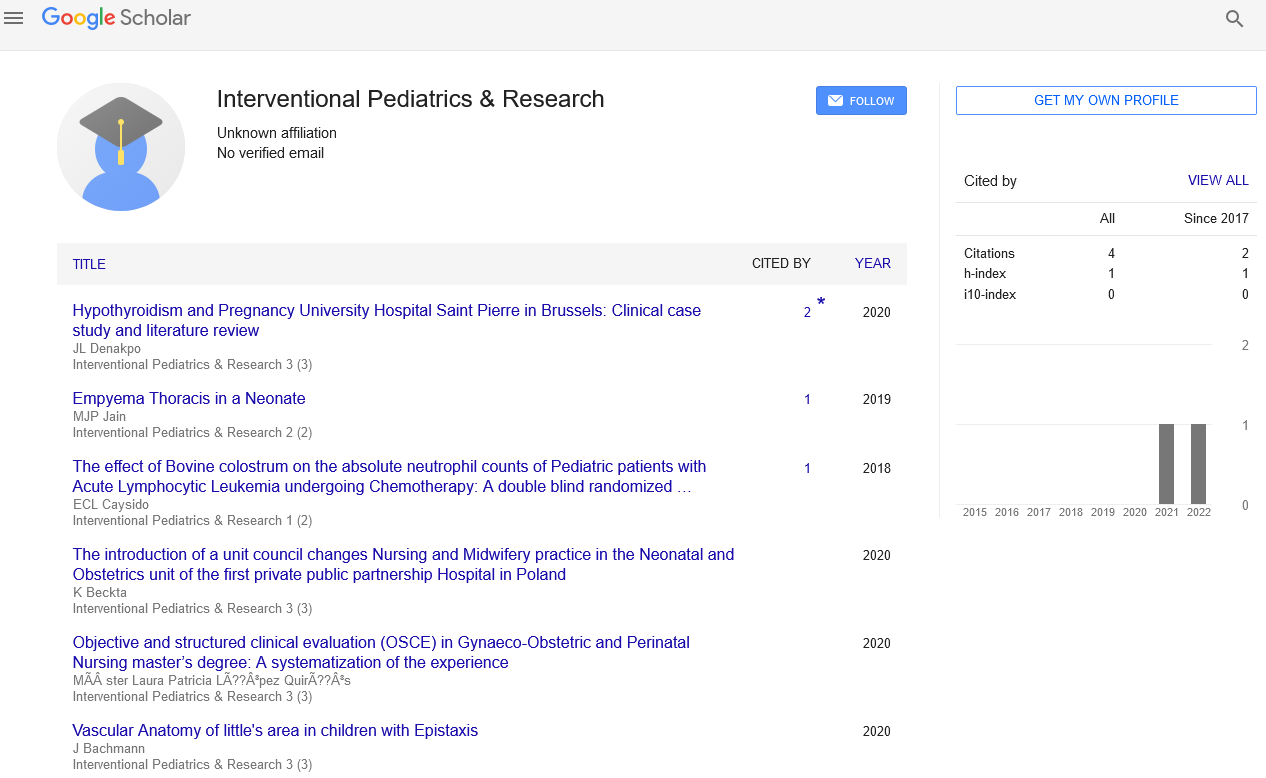Editorial - Interventional Pediatrics & Research (2025) Volume 8, Issue 1
Pediatric Interventional Gastroenterology: Minimally Invasive Solutions
Neha Gupta*
Department of Pediatric Gastroenterology, Sir Ganga Ram Hospital, New Delhi, India
- *Corresponding Author:
- Neha Gupta
Department of Pediatric Gastroenterology, Sir Ganga Ram Hospital, New Delhi, India
E-mail: neha.gupta@sgrh.in
Received: 01-March-2025, Manuscript No. IPDR-25-170179; Editor assigned: 4-March-2025, Pre-QC No. IPDR-25-170179 (PQ); Reviewed: 20-March-2025, QC No IPDR-25-170179; Revised: 26-March-2025, Manuscript No. IPDR-25-170179 (R); Published: 30-March-2025, DOI: 10.37532/ ipdr.2025.8(1).133
Introduction
Interventional gastroenterology in children has evolved as a minimally invasive specialty addressing gastrointestinal and hepatobiliary disorders. With the advent of pediatric endoscopy and related procedures, many conditions that previously required laparotomy are now managed endoscopically [1].
Key Procedures
Percutaneous endoscopic gastrostomy (PEG) has become standard for children requiring long-term nutritional support. Endoscopic retrograde cholangiopancreatography (ERCP) plays an important role in managing biliary atresia and choledochal cysts. Pediatric colonoscopy is now routinely used for diagnosis and therapeutic interventions in inflammatory bowel disease [2].
Capsule endoscopy is another innovation enabling non-invasive visualization of the small bowel, aiding in diagnosis of obscure gastrointestinal bleeding [3].
Challenges and Future
Challenges in India include lack of specialized pediatric endoscopic equipment and limited trained personnel. Moreover, ensuring safety in anesthesia for smaller children is a crucial concern [4]. Looking ahead, integration of robotics and AI-assisted imaging may refine diagnostic and therapeutic outcomes in pediatric gastroenterology [5].
Conclusion
Pediatric interventional gastroenterology provides effective, minimally invasive solutions for complex gastrointestinal disorders. Expanding access to technology and training programs in India will enhance outcomes for affected children.
REFERENCES
- Sinha CK, Davenport M. Gastrointestinal endoscopy in children. Indian Pediatr, 2010; 47: 983–990.
- Poddar U. Pediatric gastrointestinal endoscopy: Indian scenario. Indian J Pediatr, 2016; 83: 132–138.
- Thapa BR, Kaur G. Capsule endoscopy in children. J Indian Assoc Pediatr Surg, 2014; 19: 5–9.
- Yachha SK. Pediatric endoscopy: progress and challenges. Indian J Gastroenterol, 2012; 31: 51–56.
- Bhatnagar S, Poddar U. Advances in pediatric gastroenterology. Ann Gastroenterol, 2017; 30: 560–566.


